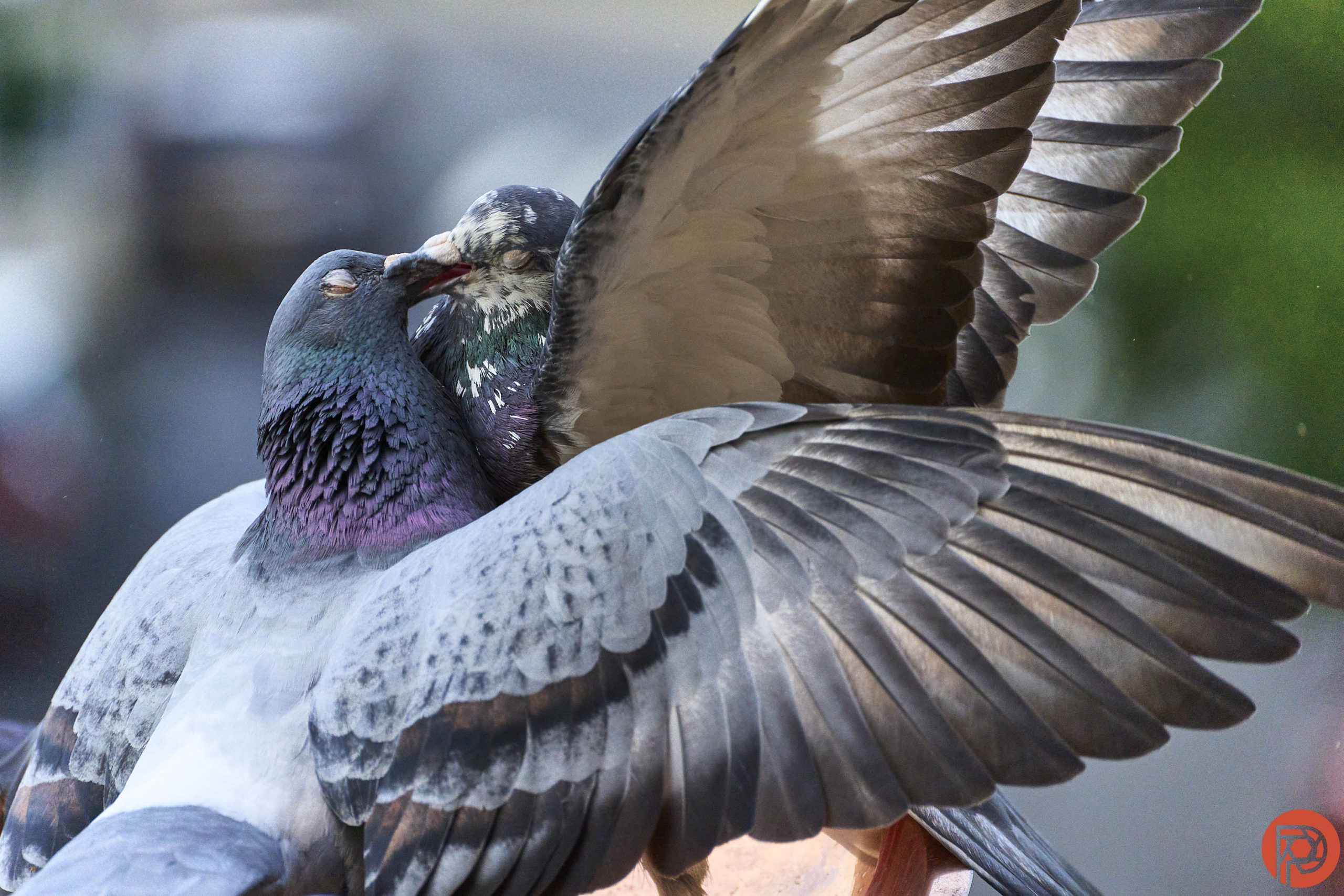There isn’t a doubt in our minds that the Sony a1 is one of the best cameras on the market. Over time, we’ve called it back in to test it with various lenses. Our entire staff agrees that it’s quite a stellar performer. But recently, I decided to give the autofocus test a more demanding test. Specifically, I tested it out for bird photography using Tamron’s 70-300mm f4.5-6.3 and Sony’s 400mm f2.8 G Master. And I’m not just talking about photographing birds being still or in flight. Nope, we’re talking about something much more action-packed!
It occurred to us that some of the most fascinating and awesome photos of birds are done when they’re doing something we don’t often see. So when I set up a bird feeder, I thought I’d get a few peaceful birds coming by. Sure enough, that’s what happened for a long time. But eventually, more and more birds came by. And that’s when things got kind of spicy.
Below is the updated text from our Sony a1 review. You can click here to read the entire thing. Again, we used the Sony a1, Sony 400mm f2.8 G Master, and the Tamron 70-300mm f4.5-6.3 which can be purchased using our links.
Update: August 2022
A lot of the photos we often see of birds using the Sony a1 are pretty static. And let’s be honest, that’s easy for a system to do. But how about tracking the birds? Tracking birds in flight is tougher to do, but it’s possible. So, we decided to do a real test to push the limits of the Sony a1.
On my balcony in NYC I’ve got a bird feeder. After changing the type of seed I put in, it’s started to attract a variety of species from my neighborhood. I use this as an easy way to bring birds to me instead of going out looking for them. After all, I’m legally blind; finding birds in trees is difficult. My hearing is better than normal, and I can often narrow in on the general location of the birds but I can’t always find them. And if you point a camera with bird detection at a tree, it will probably find branches instead of the bird. So, you have to give it some help.
But with no obstructions, the Sony a1 was able to lock onto birds fighting. For this test, I used both the Sony 400mm f2.8 G Master lens and the Tamron 70-300mm f4.5-6.3 VC lens. Both are excellent options for birding, and I started to see just how good they were after this test.
As I put the feed out, the birds began to fight one another. So I put the Sony a1 into AF-C and shot in continuous shooting set to both medium, high, and high +. While not every single shot was a keeper, I was able to nail around four great photos for every ten shots. The Sony a1 would track house sparrows, pigeons, and mourning doves as they fought for seed and dominance. The result is some pretty dramatic photography.
Take a look below.
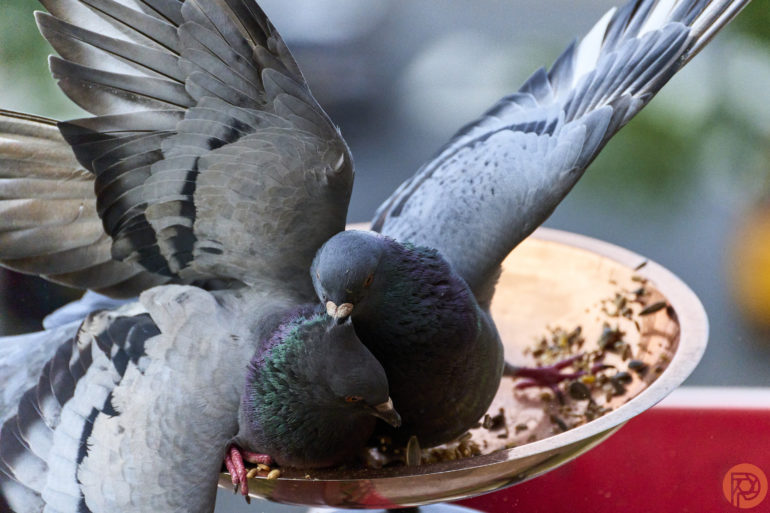
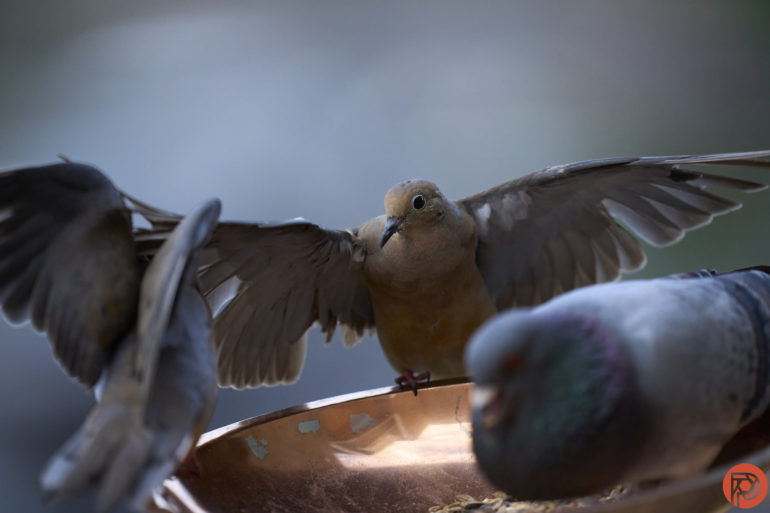
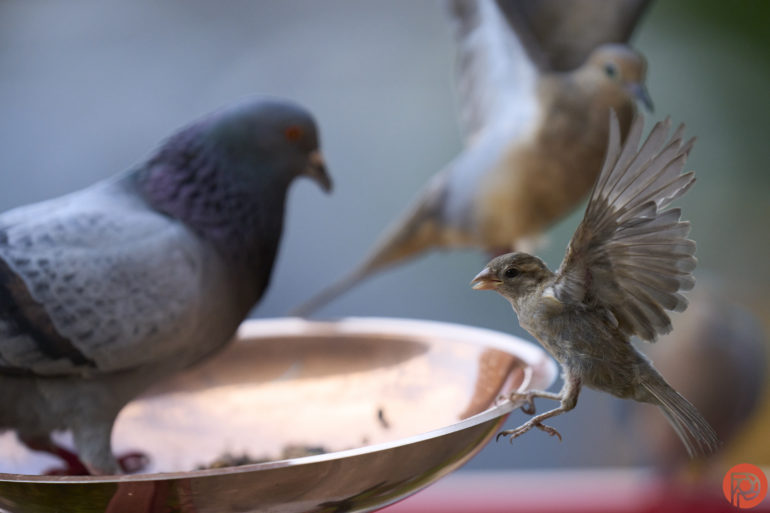
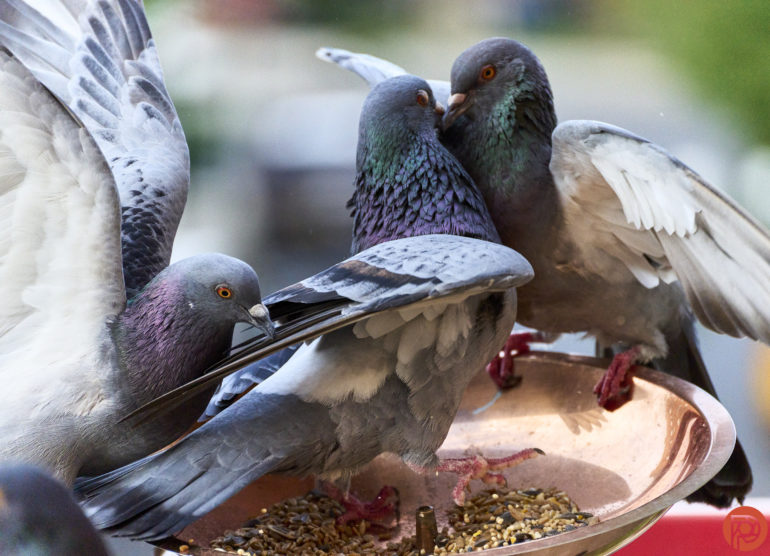
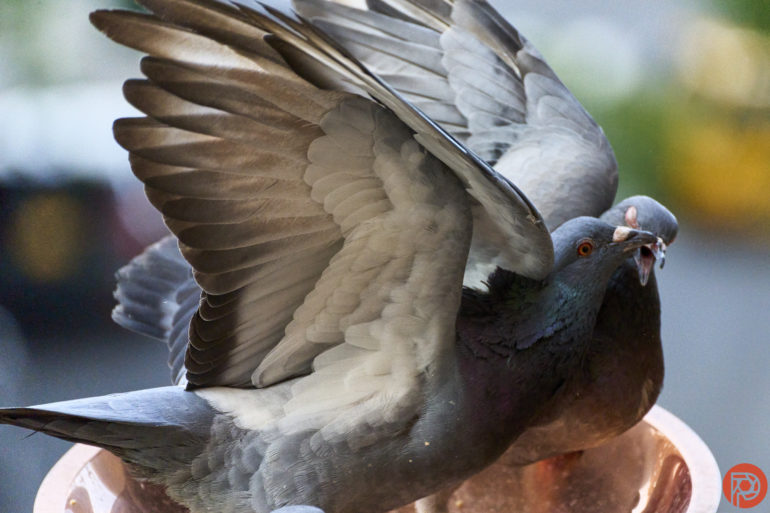
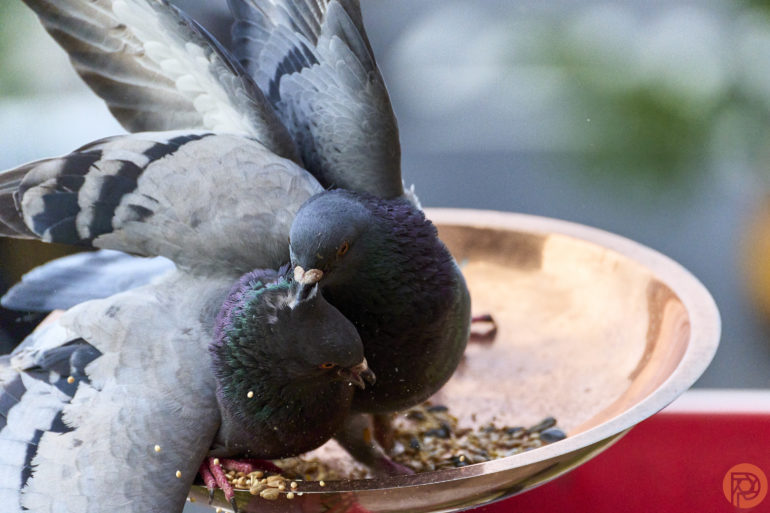
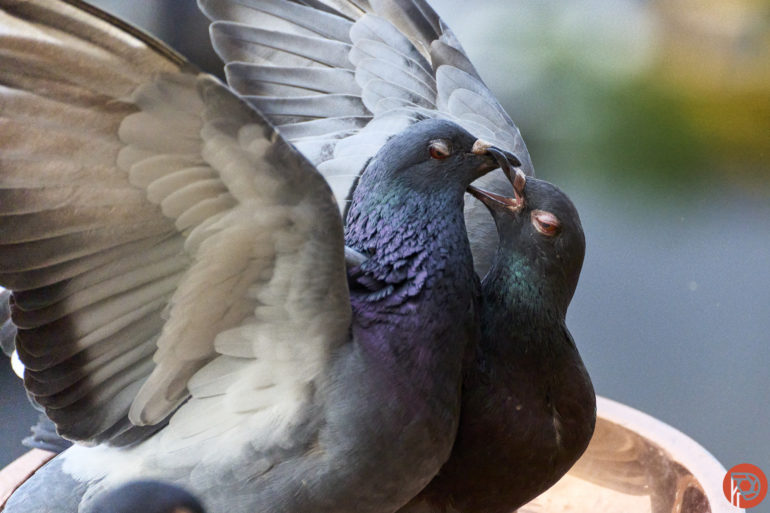
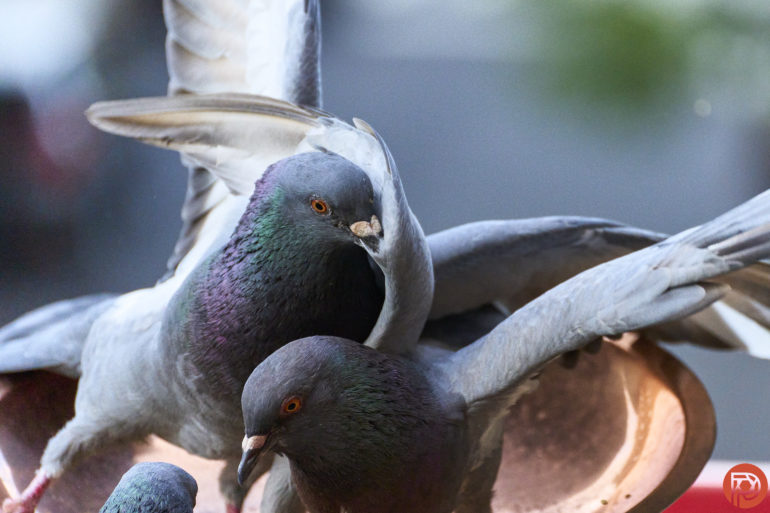
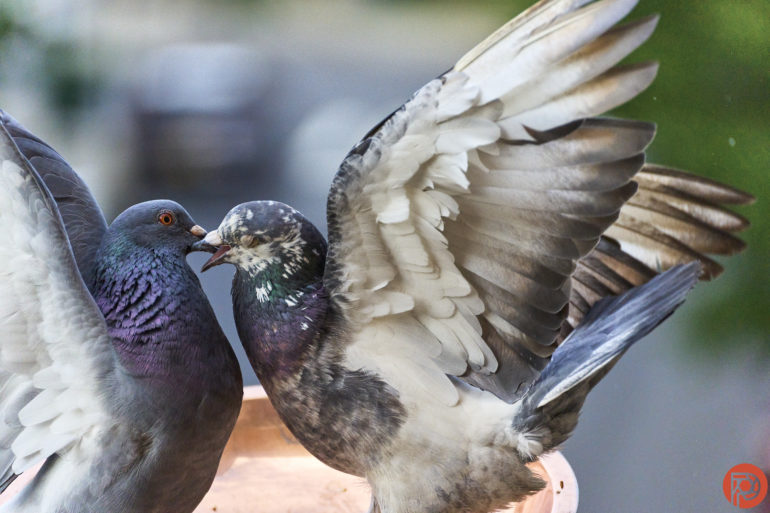
I should note that I did this test against the Canon EOS R5 and the OM System OM1. Both cameras held their own with the Sony a1, which is a far more pricey camera. If anything, our staff universally agrees that Canon does a better job with tracking birds.


